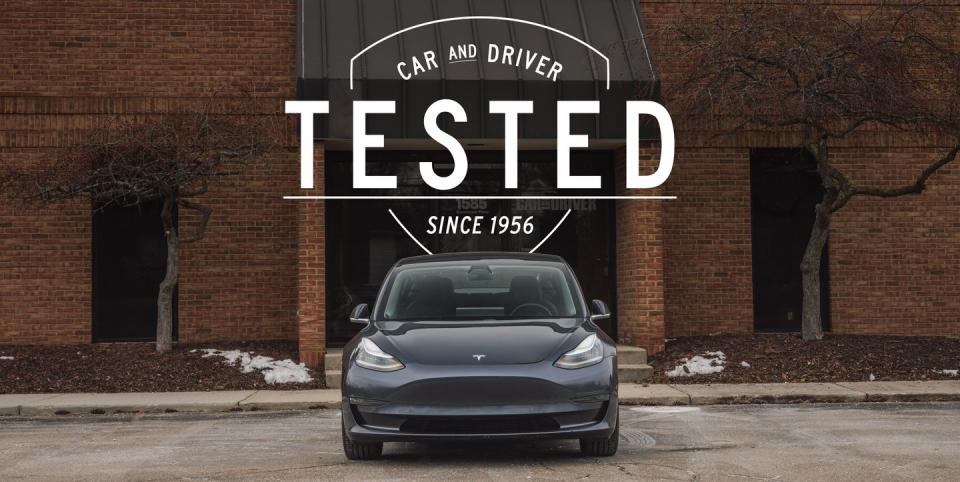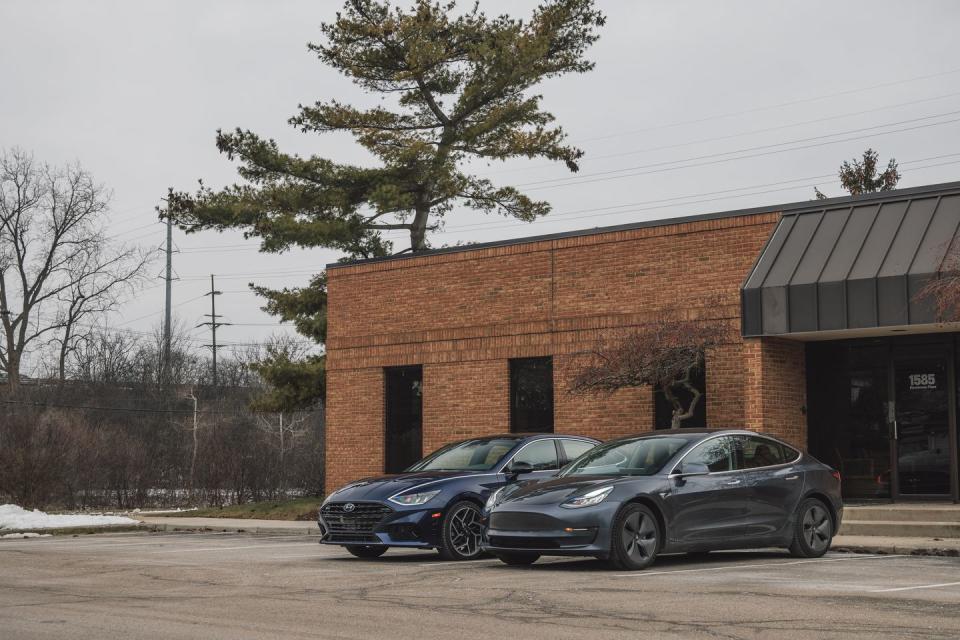How Long Can an EV Keep the Cabin Warm When It's Cold Out? We Found Out

We let our long-term 2019 Tesla Model 3 Long Range and a 2022 Hyundai Sonata N-Line sit in subfreezing temperatures with the climate control set to 65 to see how long they'd last.
The Tesla could theoretically last a max of 45.1 hours while the Hyundai would make it 51.8 hours.
No surprise, but the Tesla is vastly more efficient, burning 1.6 kWh per hour versus the Hyundai sucking gas at the rate of 10.3 kWh per hour.
A recent winter storm in Virginia shut down Interstate 95 for more than 24 hours, which brought up the question: would getting stuck in a traffic jam during subfreezing temperatures be more difficult in an electric vehicle? To see how long an EV would last compared to a gas-powered car, we left the climate control on in our 2019 Tesla Model 3 Long Range and a 2022 Hyundai Sonata N-Line and let them sit.

In Ann Arbor, Michigan, the average temperature during the time the two cars were sitting was around 15 degrees Fahrenheit, and the lowest we recorded was 9 degrees. Both cars were started in the afternoon when it was 26 degrees. We set each car's climate setting to 65 degrees and did not have any of the heated seats turned on. In the Model 3, we used Camp mode, which keeps the climate control on while the car is parked. For the Sonata, we had to disable its auto shut-off function (it will shut off the car after 30 or 60 minutes of idling). Later, after dark, as it was about to spend the night sitting in our driveway, we got nervous that its running lights were too loudly broadcasting its status (you can't lock the doors when it's idling), so we taped over them.

A few things about our Model 3: It uses the old resistive heater instead of the new, more efficient heat pump that was introduced for the 2021 model year. And after more than 40,000 miles, its 80.5-kWh lithium-ion battery pack has lost roughly 8 percent of its capacity, according to third-party software called TeslaFi that we use to collect the car's data. It's worth noting that the human body also generates heat, but neither cabin was occupied during our test.
The Model 3 started with a 98 percent state of charge, and we didn’t precondition the battery. In a real-world traffic jam situation, however, the battery and cabin would both be warm, not to mention it likely wouldn't be near a full charge. But, despite cooling down the cabin to 47 degrees prior to the test by opening the windows, we didn’t see a significant decrease in battery percentage as the cabin rose to 65 degrees. We finally plugged it in nearly 37 hours later—with 17 percent battery remaining and an indicated range of 50 miles. The battery pack depleted at an average rate of 2.2 percent per hour; put in other terms, it could theoretically last a maximum of 45.1 hours, or just under two days.

 Yahoo Autos
Yahoo Autos 